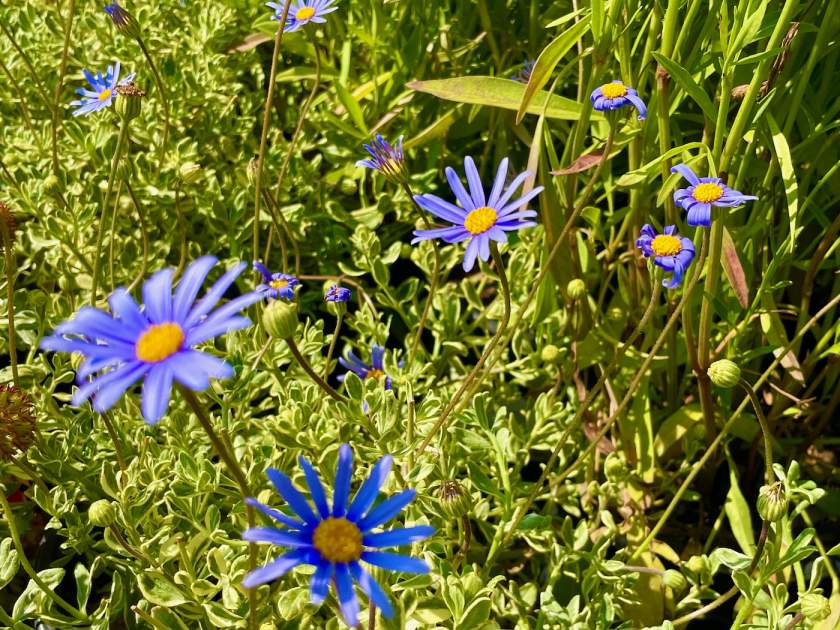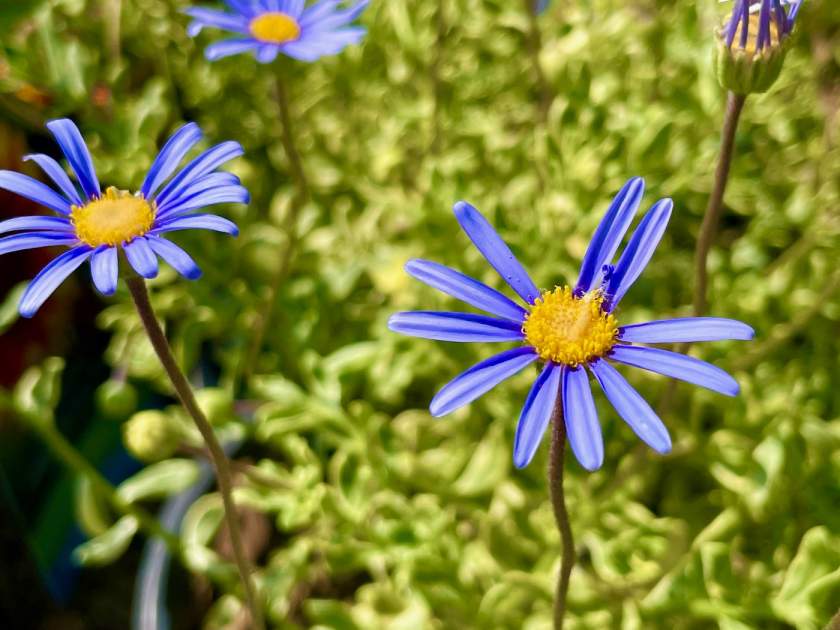Felicia amelloides: The Enchanting Blue Daisy with Many Names
Felicia amelloides, commonly known as Blue Daisy or Kingfisher Daisy, is a delightful perennial plant native to South Africa. Also referred to as Blue Marguerite, Cape Aster, Flower of Happiness, and Happy Flower, this enchanting flower has captivated the hearts of gardeners and plant enthusiasts. Belonging to the Asteraceae family, Felicia amelloides has a fascinating history of discovery and taxonomic changes. Let’s explore the characteristics of its leaves and flowers, as well as its cultivation requirements.
Discovery and Taxonomy:
Felicia amelloides was first described by Carl Linnaeus in the second edition of his Species Plantarum in 1763. Linnaeus initially named it Cineraria amelloides. Over time, several botanists, including Conrad Moench, Henri Cassini, and Augustin Pyramus de Candolle, assigned different names to this plant. Moench called it Cineraria oppositifolia in 1794 and Henri Cassini called it Agathaea coelestris, C. Thunberg called it Aster rotundifolius, later by Van Essenbeck Agathaea capensis, and William Henry Harvey called it Aster capensis var rotundifolius. Eventually, Andreas Voss recognized and established the currently accepted name, Felicia amelloides. This captivating Blue Daisy was introduced to Europe in the middle of the 18th century and has been cherished for its beauty ever since.
Characteristics:
Leaves: Felicia amelloides features ovate, rough, and hairy leaves that grow up to 1 inch (2.5 cm) in length. The dark green foliage adds an appealing backdrop to the vibrant blue flowers.
Flowers: The flower heads of Felicia amelloides are small and daisy-like, measuring around 1.5 inches (4 cm) in diameter. These lovely flowers display bright yellow centers surrounded by sky-blue ray florets. The individual flower heads are borne on leafless stems and rise well above the foliage. While the flowers attract bees and butterflies, they are not fragrant. In general, the plant produces its vibrant blue flowers from late spring to early fall. During this period, small daisy-like blooms with bright yellow centers and sky-blue ray florets adorn the plant.
Cultivation of Felicia amelloides:
Sunlight: Provide Felicia amelloides with full sun conditions. This plant flourishes when planted in a location that receives ample direct sunlight throughout the day.
Watering: Felicia amelloides has moderate water needs. Water the plant regularly, especially during dry periods, but avoid overwatering. Ensure the soil is well-drained, as this plant dislikes wet conditions.
Soil: Felicia amelloides adapts well to various soil types. However, it thrives best in average, well-drained soils. It can tolerate poor soil conditions, making it a versatile choice for different garden environments.
Pest and Disease: Felicia amelloides is generally disease-free. However, be vigilant for aphids, which can occasionally infest the plant. Regularly monitor the leaves and take appropriate measures if aphids are detected.
Propagation:
There are two primary methods for propagating Felicia amelloides. The first method is through seeds. Start seeds indoors about 6-8 weeks before the last spring frost date, or sow them directly outdoors around that time. The second method is through stem tip cuttings. Take cuttings from healthy plants and root them in a suitable rooting medium.
Felicia amelloides, known by a variety of names such as Blue Daisy, Kingfisher Daisy, Blue Marguerite, Cape Aster, Flower of Happiness, and Happy Flower, is an enchanting perennial plant originating from South Africa. Its vibrant blue flowers, coupled with its rough and hairy leaves, create a captivating display in gardens and landscapes. With its fascinating discovery history and taxonomic changes, Felicia amelloides continues to charm gardeners worldwide. By providing full sun, moderate watering, and well-drained soil, you can cultivate this delightful plant successfully. Whether you call it Blue Daisy or any of its other names, Felicia amelloides will bring joy and beauty to your garden.





